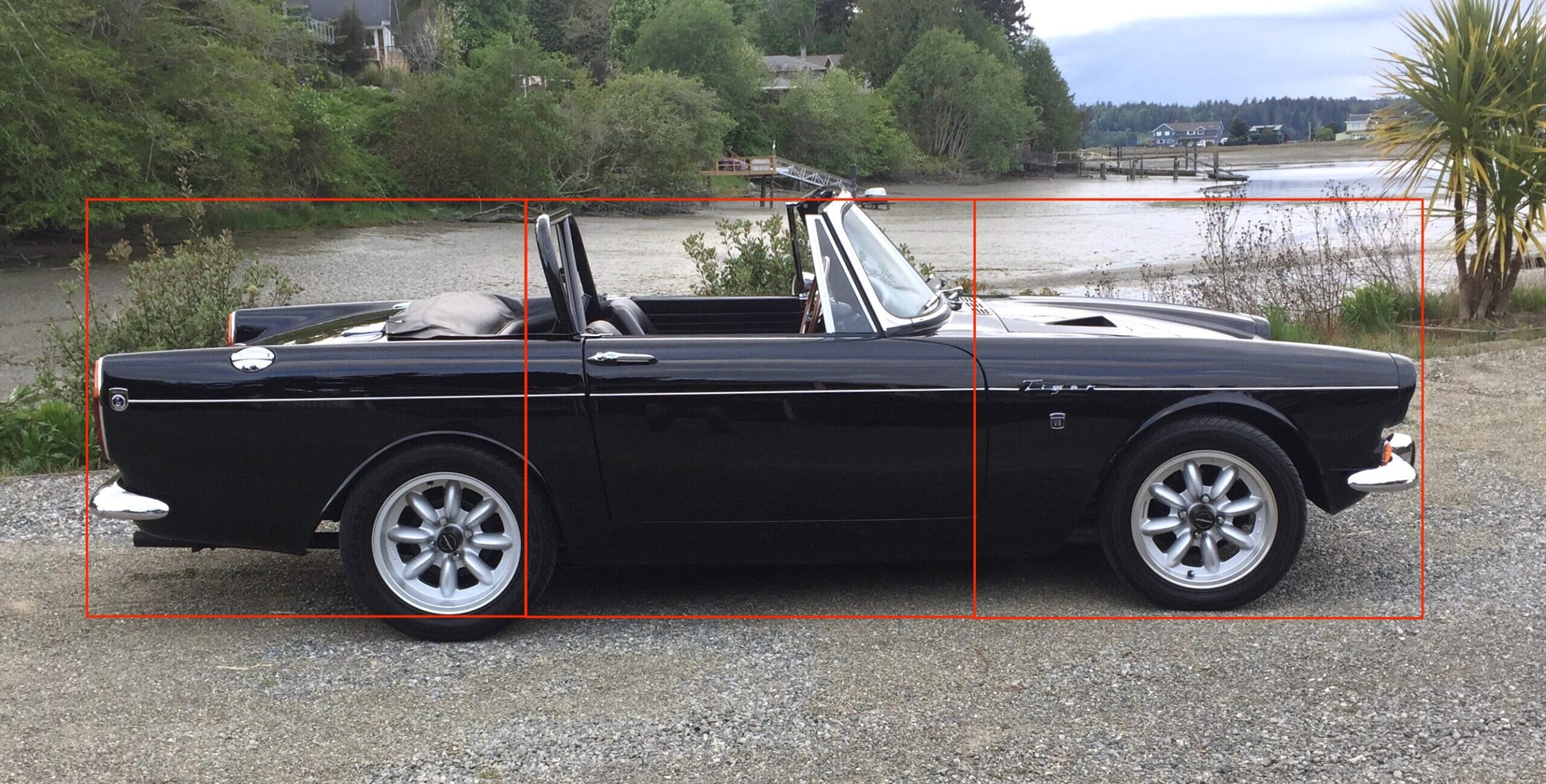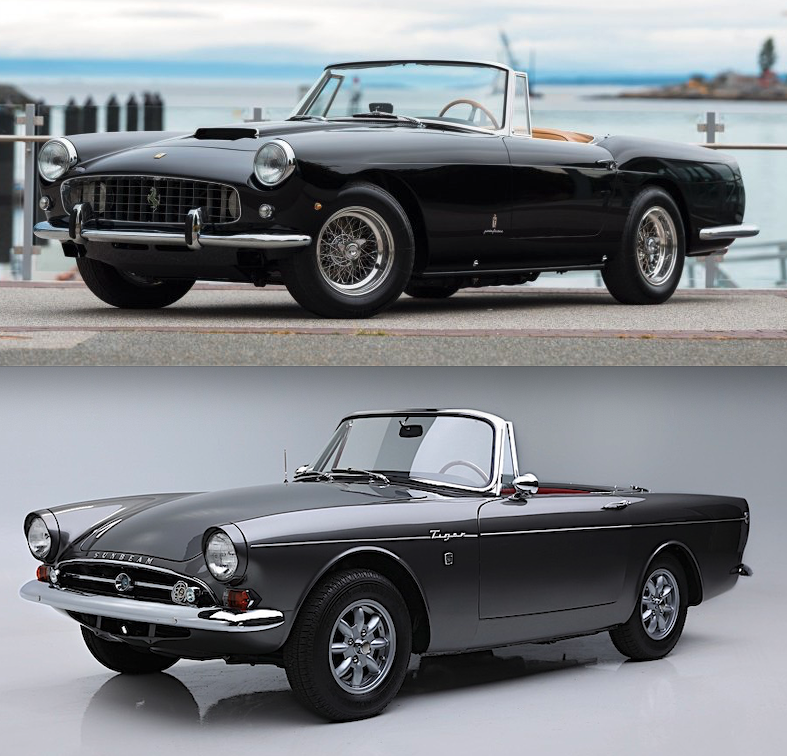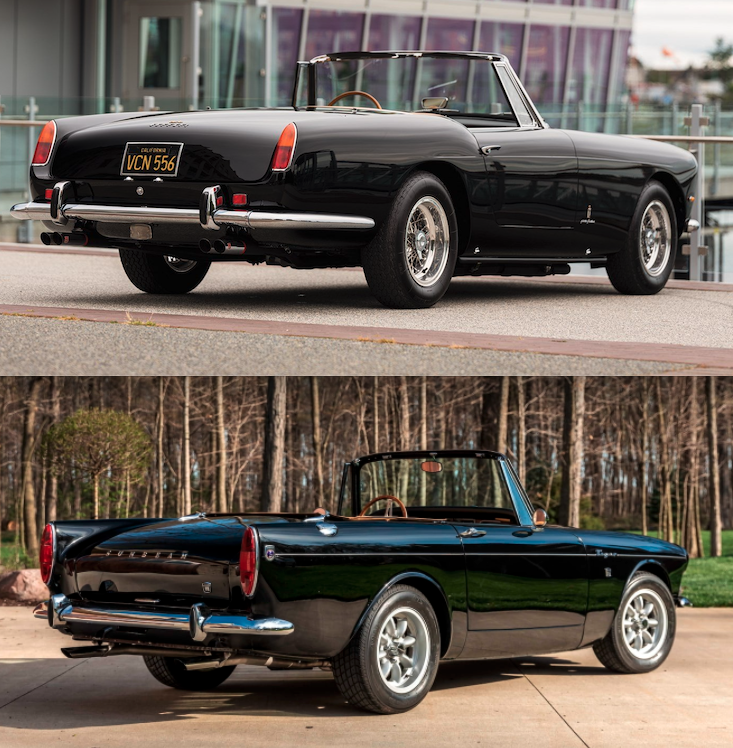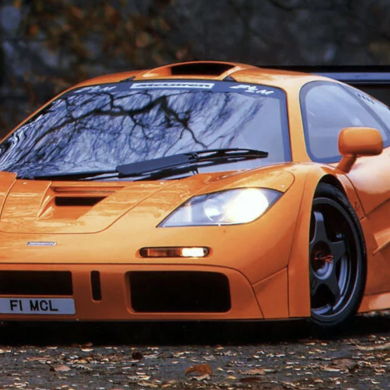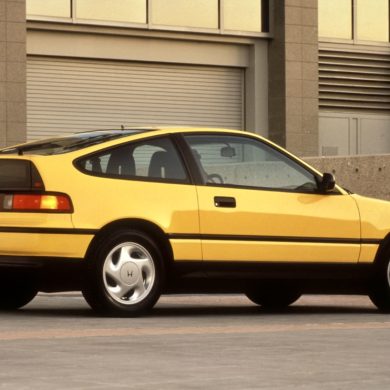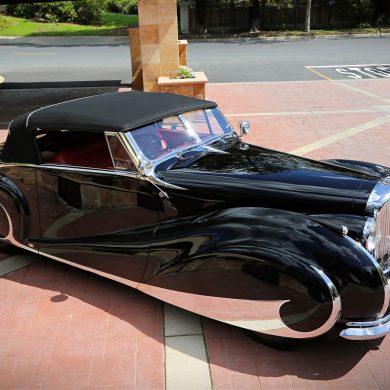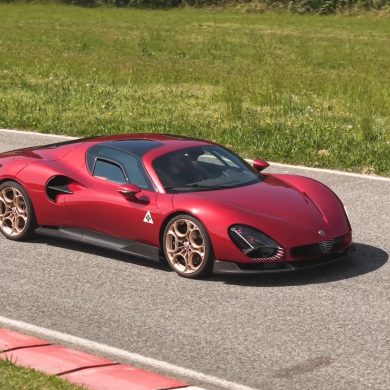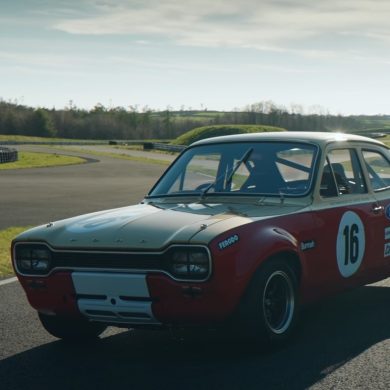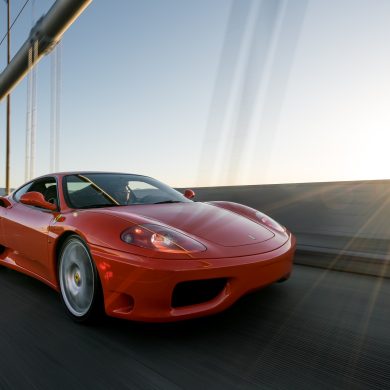If you went looking for the true father of the Sunbeam Tiger, you might surmise that American Carroll Shelby would be the one. And while Shelby did a great deal of the development on the car, the initial idea to put an American V8 engine into the British built Sunbeam Alpine came from celebrated Australian racecar driver and F1 campion, Jack Brabham. Frustrated by the lack of power from its small four-cylinder engine, Parent company Rootes Group had even considered working with Ferrari to develop a more powerful in-line four-cylinder engine to suit their needs. With no results spawning from that hopeful Anglo-Italian union, Brabham contacted Norman Garrad at Rootes, with the idea of dropping a Ford V8 engine into the Alpine. Garrad’s son Ian was conveniently located in California, operating as the West Coast Sales Manager for Rootes, not far from the Shelby headquarters. Shelby and his team had already made considerable inroads with the V8 conversion of the AC Ace, which would eventually become the Cobra, so it made sense that much of that learning could be applied to the Alpine.
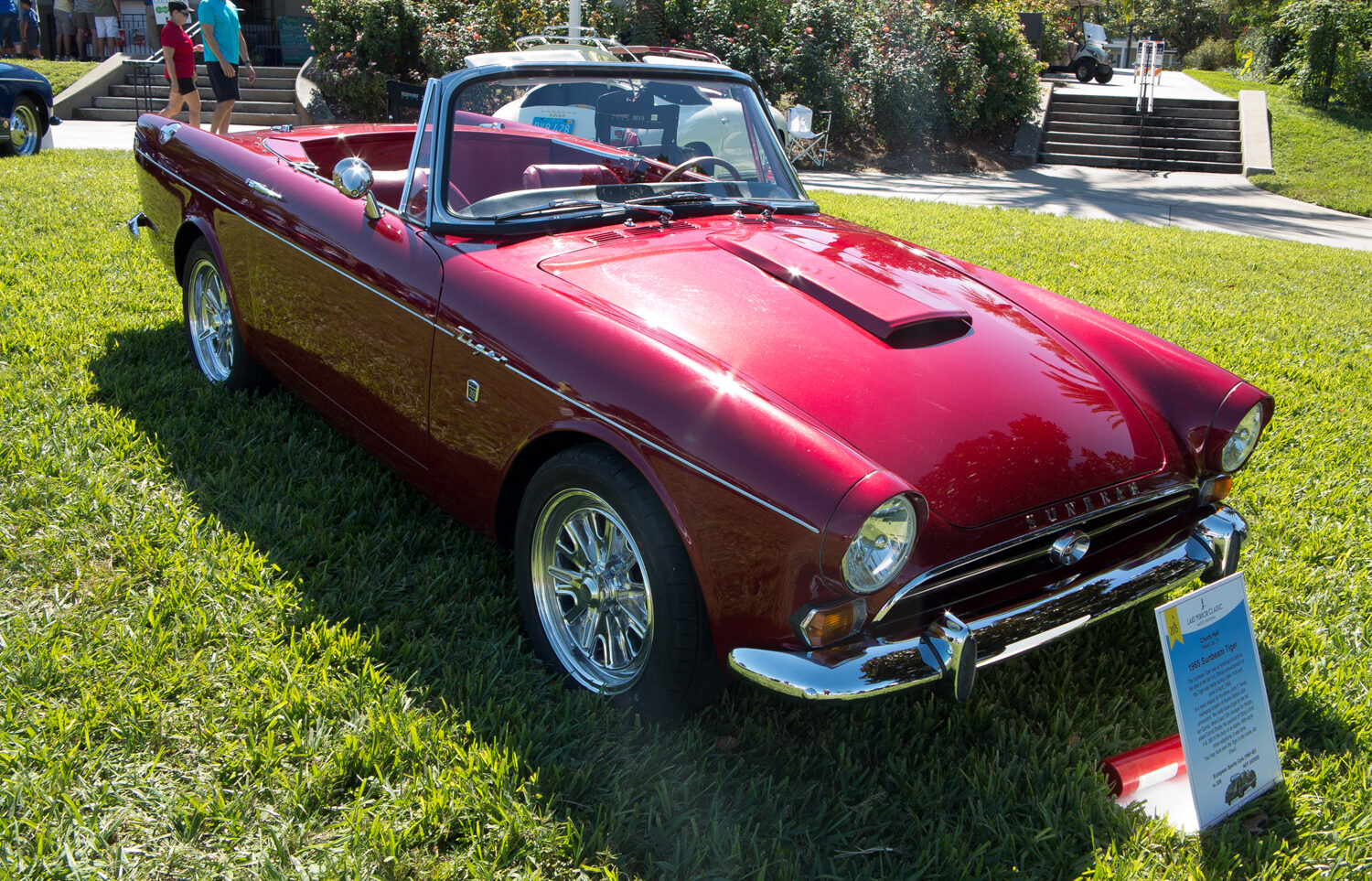
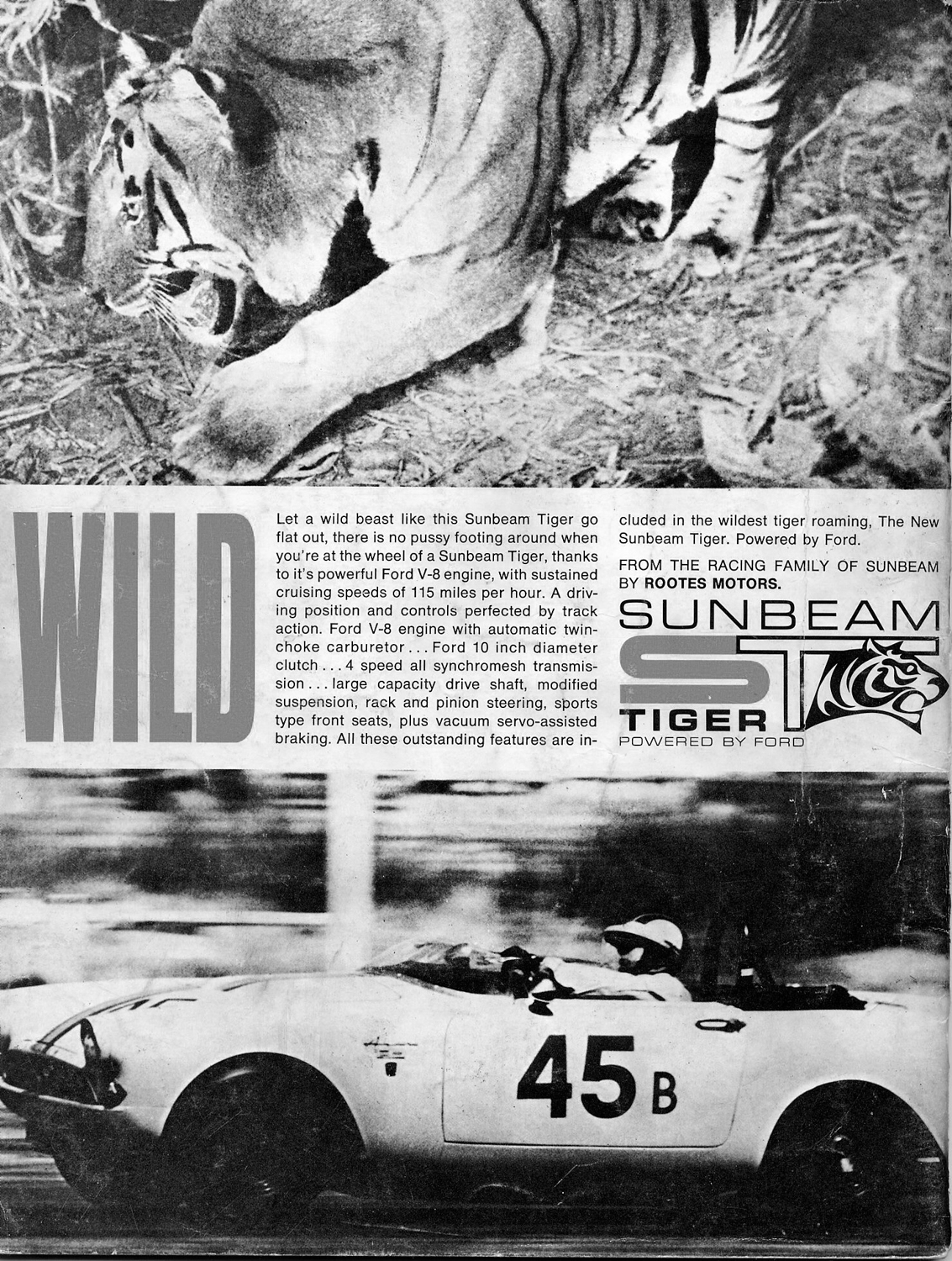
With both size and weight advantages, the potent Ford 260 V8 was a near perfect fit, requiring some engineering modifications to the chassis and suspension, but yielding a very potent and cost-effective sports car that could be easily converted in volume production.
Upon release, sales were brisk and surprisingly robust, causing Rootes to pull away from Shelby as the manufacturing source for the cars, instead giving the duties to Jensen in the UK, capable of building 300 cars per month, a figure that Shelby would have struggled to achieve even if he had the capacity. Ultimately, more than 7,000 Tigers were built, making it one of the most successful volume-built sports cars offered from an essentially cottage manufacturer. Production might very well have continued, as sales were still strong, when Chrysler took a controlling interest in Rootes Group. Flummoxed by the Ford engine in a car that was now sold by Chrysler, Mother Mopar searched eagerly for an engine in their lineup that might fit, finding all potential contenders to be too wide to fit the engine bay without significant modifications. Chrysler had no choice but to cease production. The last Tiger departed the assembly line in 1967, still powered by the updated Ford 289 engine, but with all Tigers curiously wearing the gold Chrysler Pentastar emblem on its lower left front fender.
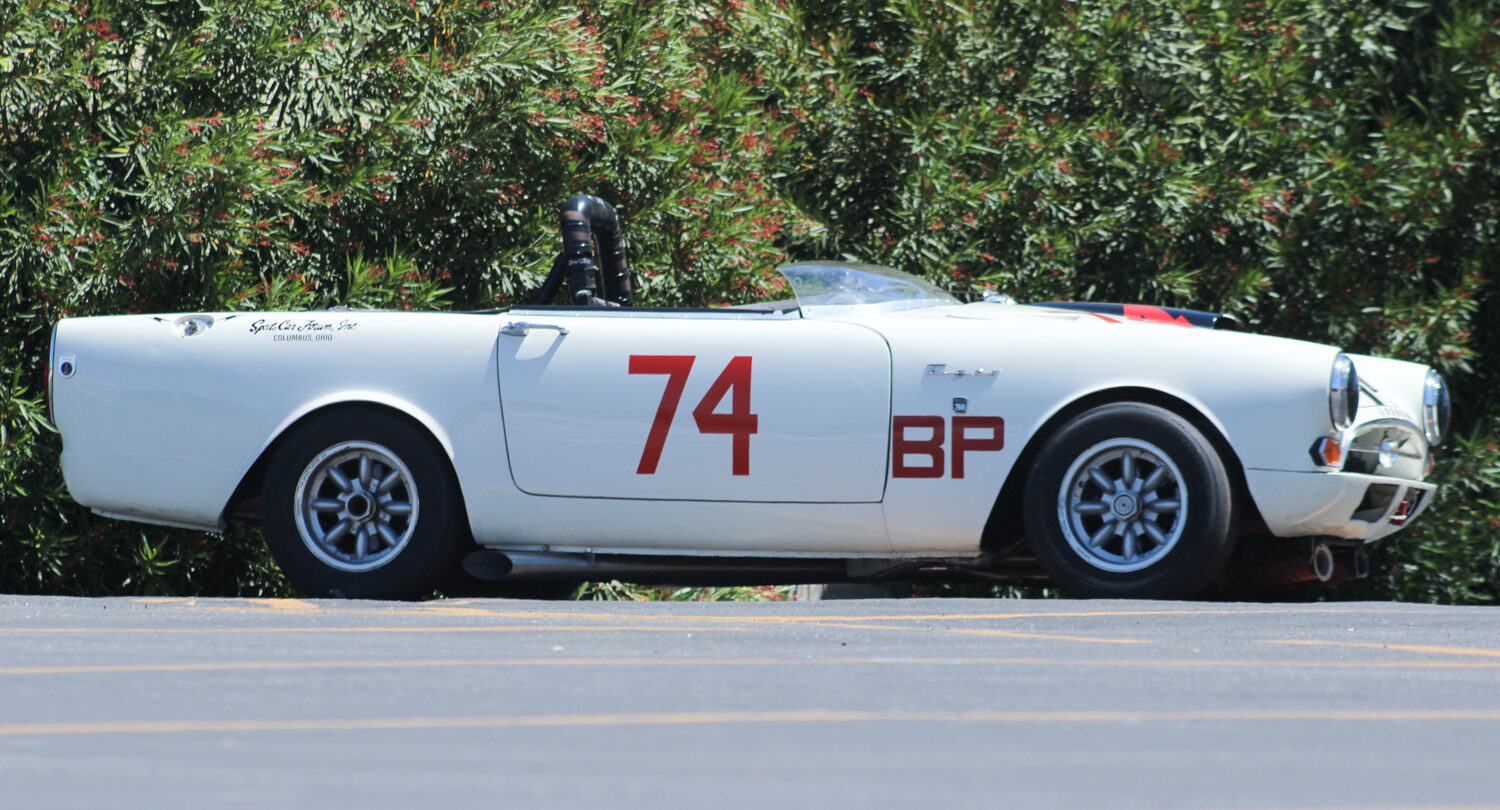
The Tiger was not only a refined and cleverly manufactured sports car, it proved to be highly capable in racing trim including three Tigers constructed specifically for Le Mans racing, an endless series of successful rally cars competing all over the world and often finishing in the winner’s circle. Popularized in 1960s television, the Tiger was a feature of the TV show “Get Smart”, occasionally featured with sophisticated James Bond-like features despite Maxwell Smart’s ongoing spy bumblings.
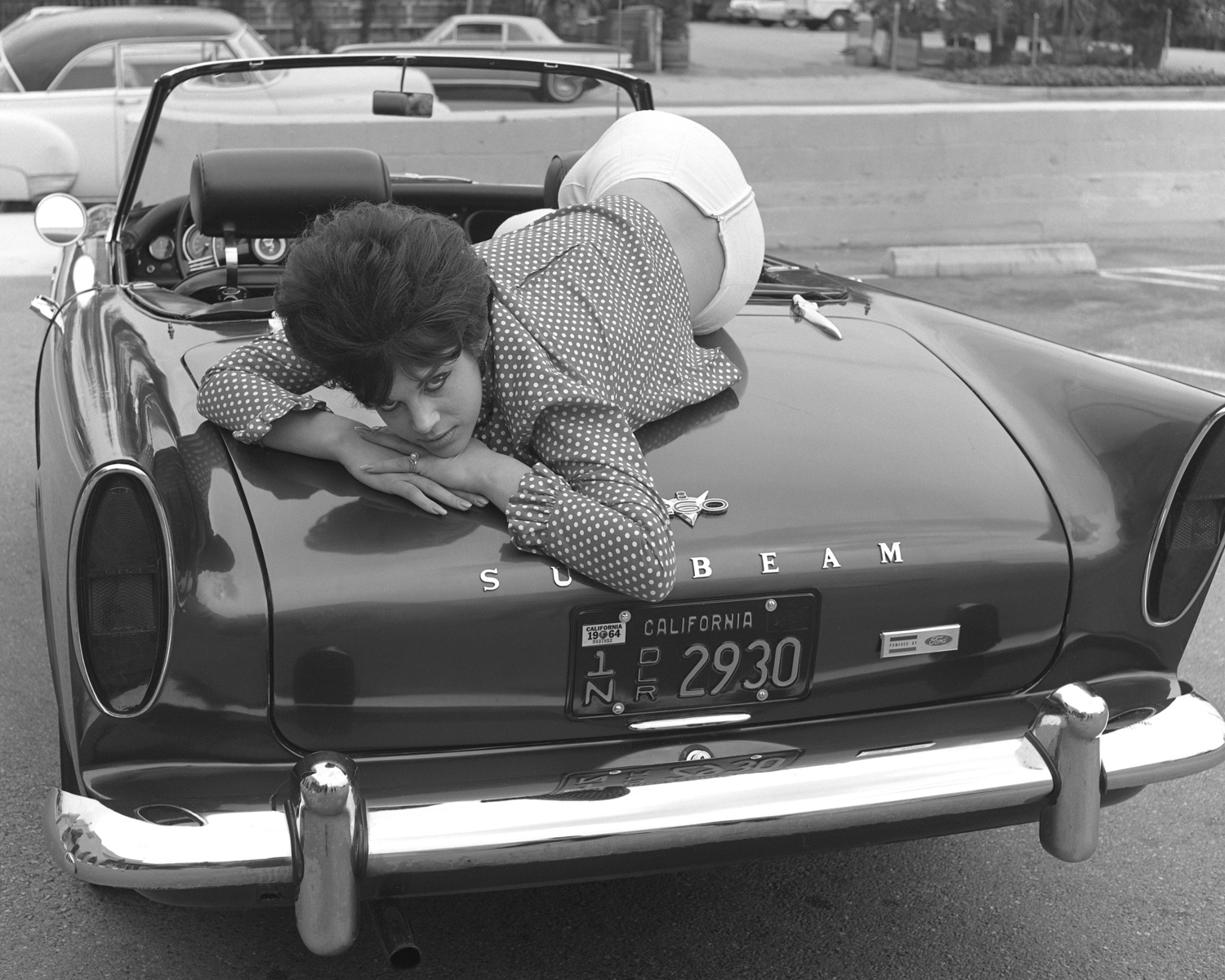
Similar in spirit to a Cobra, but considerably more affordable both then and now, the Tiger offers great performance and vintage history in a very well-balanced package. Unlike the typical British sports cars constructed by Triumph or Austin-Healey, the Tiger has a distinct upright profile with a surprising sense of formality in the body lines, windshield rake, and equal balance of front, mid, and rear body sections. The rear of the car is extended quite a bit, offering more trunk capacity, completing the fender tailfins with upright taillights, which were more typical of American body designs from the late ’50s.
The basic proportions for the Tiger were derived from the Alpine, a design that had been penned in the mid 1950s and ran concurrent in production with the Tiger from 1959-1968. Designed by Ken Howes, a former Ford designer, then working for Rootes, much of the Alpine design was further refined with styling assistance from the Loewy Studios. The resultant design was a clean and pure expression that perfectly embodied British restraint. Unlike the swoopy and more expensive Jaguar, the Tiger could easily be mistaken as a mild-mannered surrey for puttering around the Cotswolds. Tweed-jacketed Oxford professors delighted in the Tiger just as much as performance minded youth did. It hit the market quite well both in the UK and in the U.S. where the sedate performance presence in a two-seater sports car was the perfect companion to the similarly crisp and upright Mustang, brought to market at nearly the same time.
Looking at the Tiger today, it’s easy to appreciate the proportional balance, the nimble visual presence, and spunky nature, particularly when the throaty V8 engine wakes up. The unexpected roar from such a small car is a big part of the can-do attitude that perfectly suited the Tiger. Looking at the Tiger body design, it’s also easy to see why Rootes sought out Ferrari for their potential engine partnership and why Ferrari decided not to move forward with the program. Looking at the similarly designed Pininfarina bodied Ferrari of the same period, it’s clear that Ferrari was not interested in supporting a smaller, nearly equally potent performance offering with one of their engines, especially given the visual similarities. Though no evidence exists to support Shelby’s interest in beating Ferrari with the Tiger, no doubt ‘Ole Shel was happy to cash his royalty checks while also beating the Italians in the performance arena.
Not only was the Tiger a beautifully composed body design, the clean and simple dashboard layout, wood rimmed steering wheel, and basic bucket seats, seemed to echo more of Italian and emergent American design than anything from the UK. Looking at the overall design and execution, it’s conceivable that the Sunbeam Tiger could have very well been marketed as part of any American car company brand. Its clean lines were very much in keeping with mid-1960s Ford designs, which might have something to do with why the Ford V8 engine in the Tiger seems to be very much at home.
When it comes to Anglo-American performance, history shines most of the light on the Shelby Cobra. And while the Cobra certainly deserves ample praise, a rightful place in performance history belongs to the Sunbeam Tiger, particularly when you consider that seven times the number of Tigers were sold compared to 289 Cobras. Not only was the Tiger a Shelby developed concept, it went on to became one of the more refined and successful performance partnership sports cars of the post-war era, still loved and collected today for many of the same reasons behind its initial success.



